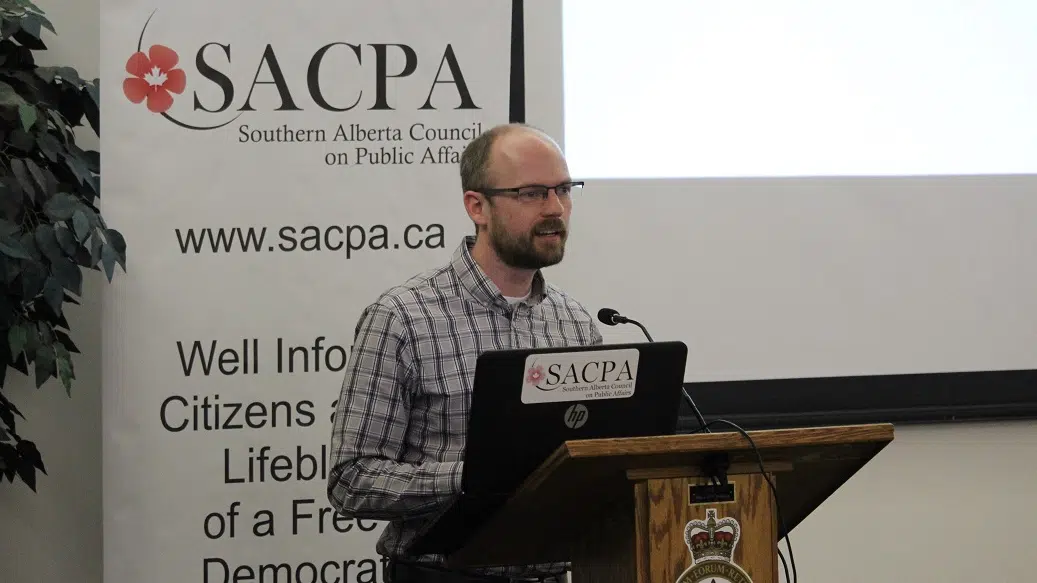
Equalization payments: SACPA discussion looks at which provinces receive them and why
LETHBRIDGE, AB – Is Canada’s current equalization formula fair to all provinces?
It’s a question that has been discussed at length in the province of Alberta for the past few years, and it was the topic of discussion on Thursday, Mar. 28, at the Southern Alberta Council on Public Affairs.
The speaker on the subject was Dr. Trevor Tombe, an Associate Professor of Economics at the University of Calgary, and a Research Fellow at The School of Public Policy.
Tombe’s main focus currently is on economic integration in Canada, from estimating the size and consequences of interprovincial trade costs to exploring the implications of fiscal transfers between provinces such as through equalization.


